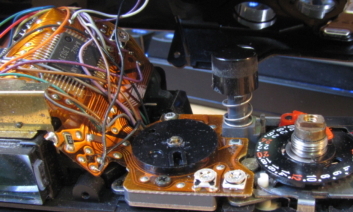Tag: clean
-

Minolta X-9 Top Plate Removal and Reassembly
I posted these instructions over on Photrio, but thought I’d post them here as well. In my last post, I replaced a dud capacitor on a Minolta X-9 that I was given by a friend. The Minolta X-9, otherwise known as the X-300s I believe, is similar to the X-300 and other X-series cameras, but…
-

Minolta XE-5 Film Advance Repair
A couple of months ago, just before the birth of my son, I fixed the film advance on my Minolta XE-5. The lever had not been completing its action properly, and when it got to the end of its rotation there would still be some film winding left to do, so it would just return…